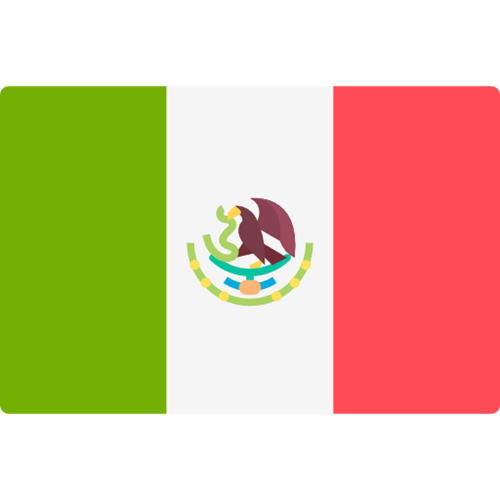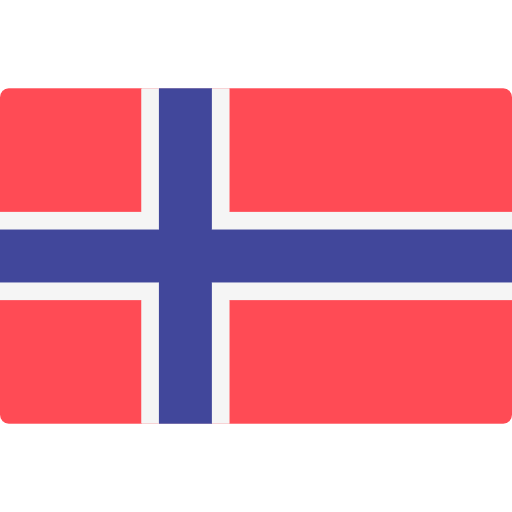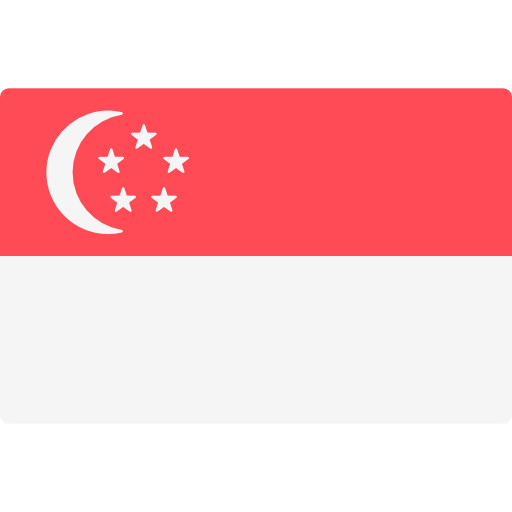Chemicals | Monthly bulletin | May 2024


Europe
Amendment in the HBCDD limits in POP Regulation
On the 21st of March 2024, the delegated Regulation which amends Regulation (EU) 2019/1021 of the European Parliament and of the Council as regards hexabromocyclododecane (HBCDD) entered into the adoption step of the public European initiative.
The main changes are:
- New limit of HBCDD concentration for substances, mixtures, articles or as constituents of the flame-retarded articles. It is equal to or below 75 mg/kg (0,0075 % by weight).
- New requirement for recycled polystyrene in the production of EPS and XPS insulation material for use in buildings or civil engineering works. The HBCDD limit is equal to or below 100 mg/kg (0,01 % by weight).
- New date for review and assessment of exemptions for HBCDD by the European Commission by the 1st of January 2026.
The next step is the official publication in the Official Journal of the European Union.
For more information, consult the public European initiative website here.
Forum enforcement projects 2025
On the 25th of March 2024, the European Chemicals Agency (ECHA) announced the next Forum enforcement projects for 2025. Forum enforcement projects have the aim of protecting human health and the environment while checking the work of European legislations for companies across the EU market.
One of them is REF-13- Online Sales Project. It consists of checking products sold online. Products must comply with European chemical requirements as RoHS, REACH and POPs restrictions and mixtures must be classified, labelled and packaged according to CLP. On the other hand, the provided information that is available online will be also checked.
The other project, in preparation, is to check if suppliers have notified hazardous chemical mixtures to the poison centres. The inspectors will check that the notification has been submitted and verify labels of mixtures and, where needed, Safety Data Sheets.
For more information, consult the ECHA website here.
Recent publications on REACH Regulation
The following table provides a non-exhaustive summary of some recent updates regarding REACH Regulation (EC) No 1907/2006:
| Summary of the most recent updates | ||
|
Date |
Subject |
|
|
15/03/2024 |
SEAC’S RECOMMENDATION ON REVIEW PERIOD ECHA Committee for Socio-Economic Analysis (SEAC) has updated its approach for recommending review periods in its opinions on applications for authorisation. The new approach incorporates developments in opinion and decision-making processes over recent years. For example, substitution plans are now factored into the evaluation of review periods.
|
For more information, consult the ECHA’s website here. |
|
03/04/2024 |
ECHA published the latest updates to the EU Chemicals legislation finder (EUCLEF) |
For more information, consult the ECHA’s website here. |
|
06/04/2024 |
The following document was published: COMMISSION REGULATION (EU) …/… of XXX amending Annex XVII to Regulation (EC) No 1907/2006 of the European Parliament and of the Council as regards undecafluorohexanoic acid (PFHxA), its salts and PFHxA-related substances |
For more information, consult European Commission website here. |
|
15/04/2024 |
Publication of Role and activities of dossier submitters in the current phase of the PFAS restriction process. This publication explains how the authorities (Germany, the Netherlands, Denmark, Norway, and Sweden) use the information from the comments submitted in the six-month consultation with the aim to update their initial restriction proposal. |
For more information, consult the German Helpdesk website here. (Only in German) |
|
17/04/2024 |
Publication of the finding of a first, joint Europe-wide first assessment of drivers and impact chemical pollution. The conclusion is that it is necessary to work more to reduce this impact on human health and environment. |
For more information, consult the ECHA’s website here. |
Other interesting resources on REACH on the ECHA’s website
- Registry of restriction intentions until outcome - ECHA (europa.eu)
- Registry of SVHC intentions until outcome - ECHA (europa.eu)
- Substance evaluation - CoRAP - ECHA (europa.eu)
- Adopted opinions and previous consultations on applications for authorisation - ECHA (europa.eu)
- Applications for authorisation - current consultations - ECHA (europa.eu)
- Current calls for comments and evidence - ECHA (europa.eu)
- Authorisation List - ECHA (europa.eu)
- ECHA's completed activities on restriction
- Submitted restrictions under consideration
- Assessment of regulatory needs list
Other interesting resources on CLP on the ECHA’s website
- Registry of CLH intentions until outcome - ECHA (europa.eu)
- Harmonised classification and labelling consultations - ECHA (europa.eu)
Technical publications related to chemical and endocrine disruptors substances
The below table outlines recent publications related to microplastics and chemical substances:
| Date | Entity | Publication |
|
15/03/2024 |
ANSES (French National Health Security Agency for food, environment and work) |
Proposed hazard classification for two diphenylamines Reaction products of diphenylamine with nonene, branched (BNPA) and Benzenamine, N-phenyl-, reaction products with 2,4,4-trimethylpentene are UVCB-type substituted diphenylamines. They are found in a wide range of products, including washing liquids, vehicle care products, paints, perfumes and air fresheners, as well as lubricants in engine oils and brake fluids. These substances are not currently covered by harmonised European classifications under the CLP Regulation on classification, labelling and packaging of products. |
|
10/04/2024 |
ANSES (French National Health Security Agency for food, environment and work) |
Triphenyl phosphate, an endocrine disruptor for species in the environment ANSES opinion on the identification of triphenyl phosphate as a substance of very high concern (SVHC) for its endocrine-disrupting propierties. |
UK
4th edition of the GB mandatory classification and labelling list
On the 2nd of March 2024, the United Kingdom’s Health and Safety Executive (HSE) published the new version of the GB mandatory classification and labeling list (GB MCL List).
The main updates are:
- 25 substances have been added from the second GB CLP Agency recommendation (February 2024).
- Corrections in several entries. The corrected entries are:
- Index no:615-046-00-2 1,3-bis(1-isocyanato-1-methylethyl)benzene, EC 220-474-4,CAS 2778-42-9, (EUH204 deleted)
- Index no: 615-047-00-8 Bis(isocyanatomethyl)benzene, EC 222-852-4,CAS 3634-83-1, (EUH204 deleted)
- Index no: 615-048-00-3 2,4,6-triisopropyl-m-phenylene diisocyanate, EC 218-485-4, CAS 2162-73-4, (EUH204 deleted)
- Index no: 615-049-00-9 1,5-naphthylene diisocyanate [containing < 0.1 % (w/w) of particles with an aerodynamic diameter of below 50 µm], EC 221-641-4, CAS 3173-72-6, (EUH204 deleted)
- Index no: 615-050-00-4 1,5-naphthylene diisocyanate [containing ≥ 0.1 % (w/w) of particles with an aerodynamic diameter of below 50 µm], EC 221-641-4, CAS 3173-72-6, (EUH204 deleted)
The requirements for these new substances will apply from the 2nd of September 2025.
Regulatory proposals notified to the WTO
The table below summarises the most recent notifications made to the World Trade Organization (WTO) (non-exhaustive):
| Notification number | Countries | Title |
|
UK |
Proposed Great Britain (GB) mandatory classification and labelling of 48 hazardous chemical substances. The purpose of this proposal is to amend the GB mandatory classification and labelling list (the GB MCL list), following review, by introducing new and revised entries for the mandatory classification and labelling of 48 hazardous chemical substances. |
PFAS restriction proposal for firefighting foams
On the 5th of March 2024, the Health and Safety Executive (HSE) received a request, from UK REACH from the Defra Secretary of State, to prepare an Annex 15 restriction dossier assessing the risks to the environment and human health from PFAS in firefighting foams.
This Annex 15 dossier, to be prepared by the HSE in collaboration with the Environment Agency, will examine whether a restriction should be introduced into Great Britain (GB; England, Scotland and Wales) covering the use of PFAS in firefighting foams.
The HSE opened a call for evidence on PFAS in firefighting foams on the 4th of April 2024 and remains open until the 3rd of June 2024.
For more information, consult the HSE website here.
US
Washington state regulates lead in cookware
On the 28th of March 2024, the State of Washington passed HB 1551 into law to regulate lead in cookware products. Effective the 1st of January 2026, cookware or cookware components containing lead or lead compounds at a level of more than 5 parts per million (ppm) will be prohibited.
After December 2034, the State may lower the 5ppm limit if it determines that the lower limit is (a) feasible for cookware and cookware component manufacturers to achieve; and (b) necessary to protect human health, including the health of vulnerable populations.
“Cookware” is defined as any metal pots, pans, bakeware, rice cookers, pressure cookers, and other containers and devices intended for the preparation or storage of food.
“Component” includes separate or distinct parts of the cookware, including, but not limited to, accessories such as lids, knobs, handles and handle assemblies, rivets, fasteners, valves and vent pipes.
Maine amends PFAS reporting and prohibition rule
On the 16th of April 2024, the State of Maine approved an amendment to the “Laws Relating to the Prevention of Perfluoroalkyl and Polyfluoroalkyl Substances pollution” for the second time.
Under the new amendment, the following significant changes were made to the existing rule:
- Reporting rule:
- Scope: now only required for products that contain intentionally added PFAS and for which the Department is made aware that the use of PFAS in the product is a currently unavoidable use, effective the 1st of January 2032.
- Exemptions that were added:
- Manufacturers that employ 100 or fewer people
- Used products/components
- FDA regulated products
- Certain veterinary products
- Products for public health, environmental or water quality testing
- Motor vehicles, watercrafts, and other transportation products
- Semi-conductors
- Non-consumer electronics and lab equipment
- Equipment directly used to manufacture certain exempted products
- Information to be reported:
- Changes: If the manufacturer is unable to provide information regarding the amount of PFAS in the product, then it may report the total weight of the product.
- Added: The identification of the applicable determination adopted by the Department that the use of PFAS in the product is a currently unavoidable use.
- Prohibition (packaging of the products are subject to the prohibition)
- Effective the 1st of January 2026, the following product categories with intentionally added PFAS are prohibited:
- Cleaning products
- Cookware
- Cosmetics
- Dental floss
- Juvenile products
- Menstruation products
- Textile articles
- Ski wax
- Upholstered furniture
- Effective the 1st of January 2026, the following product categories with intentionally added PFAS are prohibited:
- Effective the 1st of January 2029, the following product categories with intentionally added PFAS are prohibited:
- Artificial turf
- Outdoor apparel for severe wet conditions (unless labeled “Made with PFAS chemicals”)
- Effective the 1st of January 2032 (previously the 1st of January 2030), any product with intentionally added PFAS is prohibited:
- Except used products, products that for which the use of PFAS in the product is determined to be a currently unavoidable use, cooling, heating, ventilation, and refrigeration equipment, and EPA approved refrigerants, foams and aerosol propellants.
- Effective the 1st of January 2040, the following product categories with intentionally added PFAS are prohibited:
- Cooling, heating, ventilation, air conditioning or refrigeration equipment that contains intentionally added PFAS.
- Refrigerants, foams or aerosol propellants.
Sustainability, circular economy and environment
Miscellaneous technical publications relating to environmental, plastics, packaging and waste
The below table summarises the most recent publications regarding the environment, circular economy, and sustainability (non-exhaustive):
| Entity | Date | Publication |
|
Ministerio de Medio Ambiente de Chile, MMA (Ministry of the Environment) of Chile |
21/03/2024 |
The notified Regulation governs the requirements and procedures for granting the certificates provided for in Law No. 21.368 and clarifies the other obligations established therein. |
|
European Agency |
21/03/2024 |
Accelerating the circular economy in Europe: State and outlook 2024 This report analyses how recent policies in the European Union support the transition toward a circular economy and offers options and prospects to further promote this transition in the future. |
|
UK Department of Agriculture, Environment and Rural Affairs |
26/03/2024 |
The Packaging Waste (Data Reporting) (No. 2) (Amendment) Regulations (Northern Ireland) 2024 (S.I. 2024 No. 80) It revises the following points:
|
|
The general congress of the united Mexican states |
01/04/2024 |
Last reform published for the general law of sustainable forest development Its aim is to regulate and promote the comprehensive and sustainable management of forest territories, conservation, protection, restoration, production, planning, cultivation, management and use of the country's forest ecosystems and their resources. |
|
The general congress of the united Mexican states |
01/04/2024 |
this new law establishes provisions to confront the adverse effects of climate change and provisions on environmental protection, sustainable development, preservation and restoration of ecological balance. |
|
European Council |
12/04/2024 |
Industrial emissions: Council signs off on updated rules to better protect the environment The Council adopted the revised directive on industrial emissions (IED) and the regulation on the establishment of an industrial emissions portal (IEP), two complementary pieces of legislation aimed at regulating and monitoring the environmental impact of industrial activities. |
|
European Commission |
19/04/2024 |
Nitrates – updated rules on the use of certain fertilising materials from livestock manure (RENURE) The feedback period for the draft act is open until the 17th of May 2024. |
















































